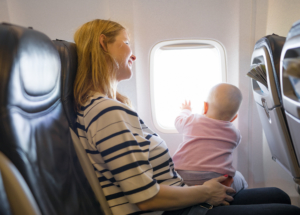As Valley Forward transitions to Arizona Forward to encompass a statewide focus, it’s only fitting that the association with a 43-year history of success tackling environmental issues — including land use, water management, air quality and energy — turns its attention to an issue that impacts every resident and every business in Arizona.
Transportation.
“Valley Forward has always valued transportation as one of the organization’s key areas of interest,” says John Godec, president of Godec, Randall & Associates Inc., which helps governments and businesses solve public and stakeholder challenges. “The Phoenix and Tucson metros have seen radical transportation changes and improvements in the past decade, so we’re asking, ‘What’s next? Are we good to go now?’”
Just as it did last year with parks and open spaces, Valley Forward hopes to answer those questions as it unveils its stance on transportation, covering topics such as transportation planning, how it impacts the quality of life in the Sun Corridor and how transportation affects Arizona’s economy.
One issue that Valley Forward wanted to address in its Transportation Primer is one on the minds of every Arizona: traffic congestion and how to better connect cities with each other. According to a policy report written by Byron Schlomach for The Goldwater Institute, the average Phoenix commuter spends an average of 38 hours a year in traffic, while a commuter in Tucson spends roughly 42 hours in traffic.
In an attempt to remedy traffic congestion in Phoenix, voters adopted Proposition 400 in November of 2004, which allowed for the renovating and extending of current freeways and the addition of more public transportation, such as the Valley Metro Light Rail, all of which connect small communities with larger cities. In Tucson, Pima County voters approved the $2.1 billion Regional Transportation Plan, which saw the construction of a modern streetcar project throughout the city, giving more people a chance to get around, while getting cars off the highways.
However, the question that has been asked by Valley Forward is, is it enough, especially since Arizona only seems to be growing in size?
“At least half the transportation systems that the state will need in 2050 have yet to be built,” says Sally Stewart, deputy communications director at the Arizona Department of Transportation (ADOT) and Valley Forward member. “Despite the recent economic downturn, Arizona’s growth is not over. It is not a question of whether the Sun Corridor — one of the emerging megapolitan regions in the country — will be a reality; it is simply a matter of when.”
According to a study published in March 2010 by ADOT, it is expected that Arizona’s population will more than double, from 6.4 million to about 16 million people in the next 30 years. Maricopa County’s population is expected to increase by 90 percent, from 4 million people to about 7.6 million. The study suggests that because of this population explosion, travel times for various destinations in the Sun Corridor could increase by about 100 percent by 2050. This could mean that a trip between Phoenix and Tucson, which currently is about a 95-minute drive, could take up to 5.5 hours in 2050 (assuming that the Interstate-10 freeway is widened to about 10 lanes).
Valley Forward experts say that Arizona must plan ahead to improve this possible transportation dilemma, especially if the state wants to see more business activity and economic improvement.
“Transportation is key for economic development,” says said Eric Anderson, transportation director at the Maricopa Association of Governments. “The ability of a company’s workforce to commute on a predictable basis is critical. The movement of freight in and out of the region is also important. Companies looking to locate in the region always look at the adequacy of the transportation system in providing mobility and travel options.”
According to the American Public Transportation Association, every $1 billion invested in public transportation supports and creates 36,000 jobs. Despite the fact that policies, such as Proposition 400, have created and funded transportation projects, Valley Forward says that there is still not enough money allocated for Arizona’s travel needs.
“Arizona’s future economic development will be tied closely to the state’s willingness to commit funding and resources to improving and expanding its statewide transportation system,” says Craig Hughes, CEO and founder of Total Transit, the parent company of Discount Cab in Phoenix and Tucson. “Without a firm commitment to building and maintaining an efficient, integrated transportation network, the future could be one of congested freeways, inadequate rural highways, gridlocked city streets and under-funded and under-utilized mass transit.”
Valley Forward hopes that its stance and data findings will help create a dialogue not only among Phoenix and Tucson residents, but also policymakers.
“Arizona’s business community is a vital participant in guiding policymakers regarding the infrastructure challenges facing the state,” Stewart says. “If Arizonans want to enjoy a better quality of life based on a vibrant economy, then the business community must work closely with policymakers to make the difficult, but necessary decisions regarding transportation infrastructure.”
Adds Diane Brossart, president and CEO of Valley Forward, “We want to bring together the public and private sectors. Valley Forward’s goal is to try and drive the conversation to the middle and take the politics out. We want to drive up solutions so that Arizona, as a whole, can advance and can sustain itself.”



